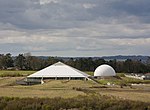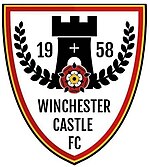Magdalen Hill Down

Magdalen Hill Down is a chalk downland hill, situated 1.5 miles (2.4 km) to the east of the centre of the city of Winchester in the English county of Hampshire. It is crossed by the B3404 road, the old main road from Winchester to London via New Alresford and Guildford. Most of the land to the south of the road is now a reserve run by the Butterfly Conservation, but part of it is used by the Magdalen Hill Cemetery, Winchester's principal cemetery. The land to the north of the road is largely farmed, but is also home to St Swithun's School and Leigh House Hospital.The down lies in the Winchester district, mostly within the parish of Chilcomb. At its highest point, the down reaches 124 metres (407 ft) above mean sea level.
Excerpt from the Wikipedia article Magdalen Hill Down (License: CC BY-SA 3.0, Authors, Images).Magdalen Hill Down
Petersfield Road, Winchester Winnall
Geographical coordinates (GPS) Address External links Nearby Places Show on map
Geographical coordinates (GPS)
| Latitude | Longitude |
|---|---|
| N 51.06053 ° | E -1.27774 ° |
Address
Magdalen Hill Down
Petersfield Road
SO23 0QW Winchester, Winnall
England, United Kingdom
Open on Google Maps











